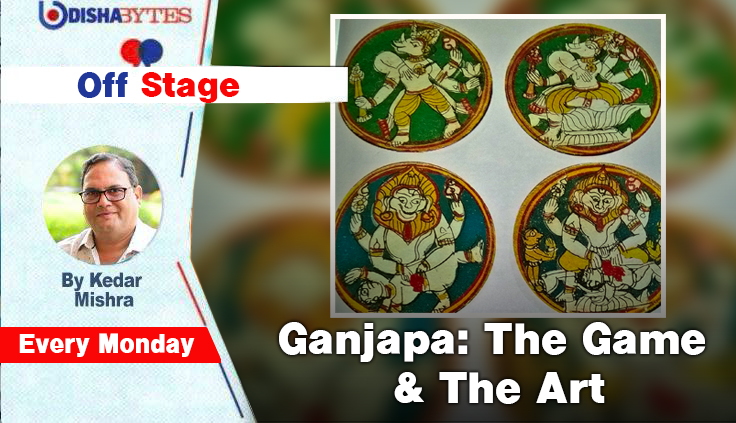‘Ganjapa’: The Game & The Art

The relationship between art and sports is not very close. While art is subtle and spiritual, sports are gross and largely concerned with physical energy. However, not all sports are limited to physical skills. There are many sports that only stimulate the brain and psychological strength. Indoor games such as Chess, Cards etc depend on mental strength and have subtle forms of brain power. As in the game of Cards, there are many new applications in the colours, lines and figures in its making. The most beautiful combination of art and sports can be seen in ‘Ganjapa’ of Odisha. Let’s talk about this lesser-known art form, which is also part of a dying tradition of interior games.
- There is no definite opinion about the literal meaning of the word ‘Ganjapa’. However, it has different names in three regions of Odisha. While some call it Tas, it is called “Sara” or “Chakasara” in other regions. In a broader way, the Ganjapa is like a set of cards. However, in the game of cards, the number of cards in a set is fixed, but the number of ‘Ganjapa’ cards varied from region to region.
- The shape of the ‘Ganjapa’ is round while the Roman cards are rectangular. In colloquial Odia it is called Chakk Artists from Ganjam, Puri and Sonepur districts of Odisha make ‘Ganjapa’ and propagate its gaming technique.
- Historically the origin of ‘Ganjapa’ is from Mughal Ganjifa. However, the European colonisation in India brought the game of Cards. It seems that ‘Ganjapa’ is to be a combination of Mughal and European art.
- .The Bishnupur rulers of Bengal introduced Dasavatara (ten incarnations of Lord Vishnu) and Digapala (guardians of the directions)’Ganjapa’. However, it’s not properly known how the elements of Dasavatara and Digapala ‘Ganjapa’ came into the Puri tradition of painters.
- A set of ‘Ganjapa’ contains 96/120/144 numbers of round cards. Colour variation is also different. Each set contains cards of Eight, ten, twelve, fourteen, sixteen or twenty colours. The colour composition and lining of ‘Ganjapa’ are all unique.
- Dasavatara ‘Ganjapa’ is more popular in the Raghurajpur of Puri and Ganjam districts. While Sonepur ‘Ganjapa’ depicts the battle of Rama and Ravana from the epic Ramayana. In Sonepur’s version of ‘Ganjapa’ the individual drawing of characters like Rama, Ravana, Indrajit and Hanuman have Unique features of lines and colours.
- The making of Ganjapa cards follows a specific indigenous process. The Card is made of cloth and tamarind gum. Colours are made from local sources like soil, stone, burnt and dry leaves.
- With the advancement of modernity ‘Ganjapa’ is dying as an art and also as a game. We hardly have a good number of artisans or skilled players.
- Preservation of this brilliant miniature art form is the cry of the hour. We have very few artisans left who know the secret of its making and playing.

Comments are closed.